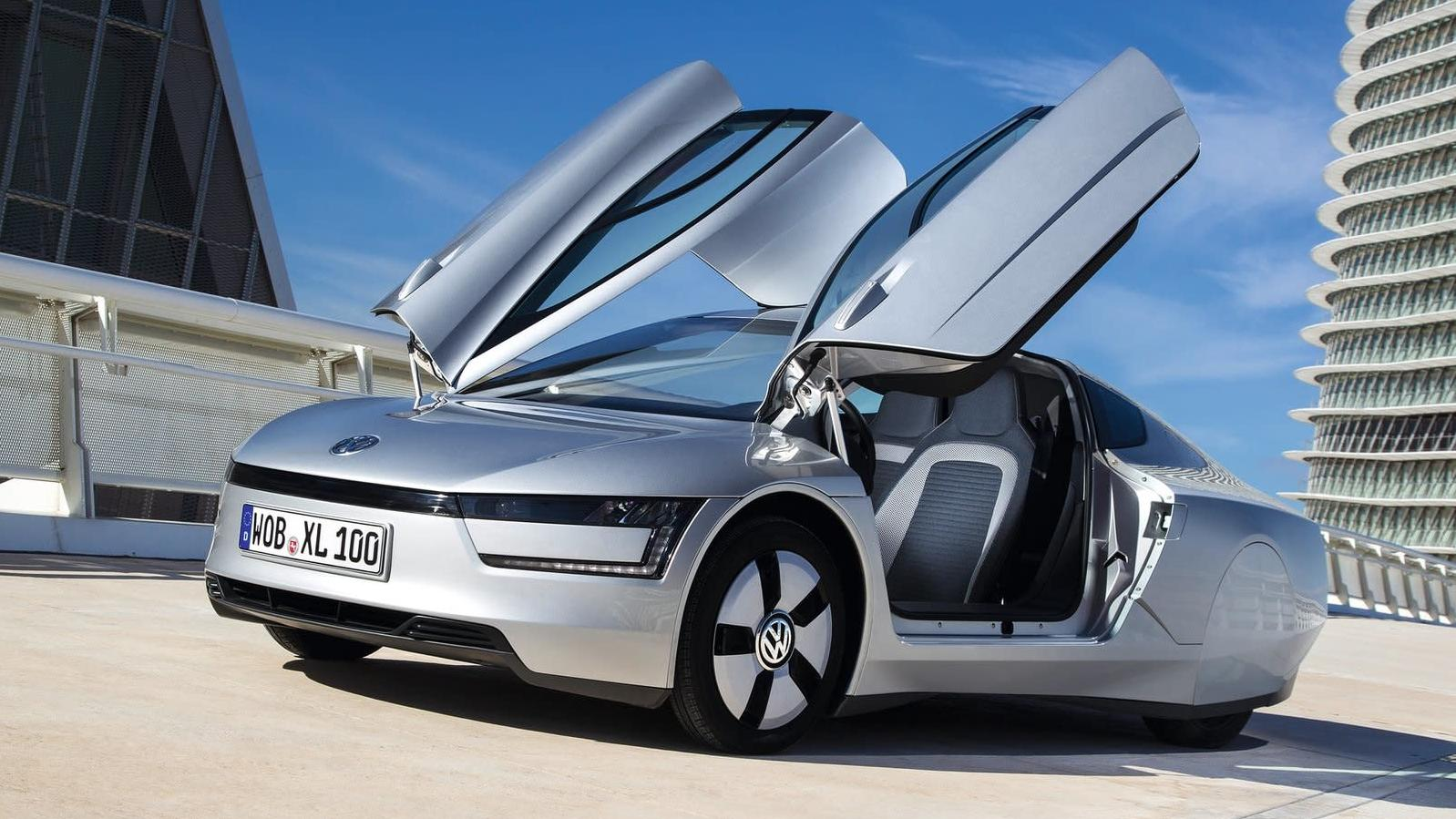The Volkswagen XL1 Was The Future We Never Got
We know what the future of Volkswagen looks like today—or at least, what the future of cars according to Volkswagen looks like. Many models, diverse in body styles, all riding on one modular platform and powered by electricity. An EV onslaught, the scale of which the world has never seen before. But it wasn't always this way.
"Clean diesel." Once, that was the future for VW. After all, diesels sold in huge numbers in places like Europe and Latin America, so why not North America too? Diesel seemed key to the world takeover plans that VW (and its former boss, who died last week) very clearly had.
And to show just how good this fuel could be, VW ran a kind of science experiment. A rare, super limited production, Europe-only science experiment on wheels.
It was called the Volkswagen XL1: a cigar-shaped, two-seater spaceship the size of a tiny sports car and powered by a 1.0-liter diesel hybrid engine. It was the evolution of the 1-Liter Car, a radical idea that had been floating around for about a decade, and finally put into production in 2013 after years of concepts. Only 250 examples were to be made.
The big selling point, so to speak, was the fuel economy. Supposedly it could fetch 260 MPG, which at the time made it feel like it could put oil companies out of business.
That didn't happen. And even slightly before VW was caught cheating on diesel emissions—a corporate scandal that forced it to reevaluate everything it was doing and pivot hard to EVs—the XL1 felt like it would just stay the science experiment it was. After Dieselgate, its fate was totally sealed.
This does not, however, make it any less fascinating.
I hadn't thought of the XL1 in a long time. It didn't even come to mind when Ferdinand Piëch died. Then it became the subject of a Regular Car Reviews test this week. It is not a regular car, to be sure; it's kind of the opposite of a regular car.
But one such car lives at the Lane Motor Museum in Nashville, which is where The Roman and Mr. Regular got to drive it. And it is worth revisiting even now.
Did you know that it had a curb weight under 1,800 pounds? That it had video cameras instead of side mirrors? That it had a staggered wheel setup for aerodynamics? That its two-cylinder diesel engine sat behind the driver? Or that it sounded like a school bus under hard acceleration?
Some of this I know, because I've actually driven it, years ago. (Hilariously it was the first car I ever drove in New York City, where I now live, and I can't figure out if that set the bar high or low.) It was a bizarre dream machine, something like that looked like a movie prop or a design prototype. As Mr. Regular says, it's extremely hard to explain to people, especially normal people.
But even a few short years after the XL1 went out of production—that was just in 2016!—it feels like such an anachronism now. A fossil fuel-powered car that gets 260 MPG? Who cares? Long-range EVs are the real future. Full electrification is the way everything is going. Even hybrids kind of feel like a stopgap to that.
Just look at what VW's own Porsche brand unveiled today. That makes way more sense than the XL1 ever did, and it sure as hell doesn't take 12 seconds to get to 60 mph.
The XL1 wasn't a bad car, though. It was very interesting to drive. It was even pretty fun, seeing all the reactions people had to it. But in the end, it was a footnote in the history of automobiles—in no small part because of VW itself.
Maybe it might have been the future, if VW had figured out how to give us real "clean diesel" without cheating. Or if VW had never been caught. I can't say. But when I think of the decades to come, I'd rather we be entirely emissions-free when it comes to new cars. At least, as much as possible.
